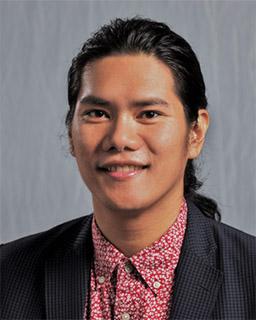
Edson C. Tandoc is an Associate Professor at the Wee Kim Wee School of Communication and Information at Nanyang Technological University in Singapore. His research focuses on the sociology of message construction in the context of digital journalism. He has conducted studies on the construction of news and social media messages. His studies about influences on journalists have focused on the impact of journalistic roles, new technologies, and audience feedback on the various stages of the news gatekeeping process. For example, he has done some work on how journalists use web analytics in their news work and with what effects. This stream of research has led him to study journalism from the perspective of news consumers as well, investigating how readers make sense of critical incidents in journalism and take part in reconsidering journalistic norms; and how changing news consumption patterns facilitate the spread of fake news.
DJRG Fellow, March 2019
Title and abstract
Tools of Disinformation: What Factors Enable Fake News to Deceive
The worsening problem with disinformation, aggravated by the influx of fake news online, has prompted institutions around the world to take action. Governments have initiated legislation. News organizations have come together to fight fake news. Other organizations have launched and funded fact-checking initiatives. Technology companies, blamed for the rise of fake news, have also taken action by removing accounts that spread fake news, among other initiatives. And yet ultimately the root of the problem is: What makes people believe in fake news?
The answer, unfortunately, is not simple. The production and proliferation of fake news is motivated by financial and ideological gains, and initiatives to combat fake news are not likely to stop actors with vested interests from finding new ways to spread fake news and other forms of disinformation. This is why a lot of research has focused on understanding the factors that make individuals prone to being misled by fake news, for these factors are often exploited by those behind the production and proliferation of fake news. Studies have argued that the reach of fake news, at least during the US presidential elections in 2016, was limited, with only a fraction of the population exposed to fake news posts (Allcott & Gentzkow, 2017; Nelson & Taneja, 2018). But for these people who have been fooled by fake news, the effects are real: For example, a man opened fire at a pizzeria in Washington DC on 4 December 2016 after reading a viral and false conspiracy story that identified the pizzeria as the site of an underground child sex ring ran by then presidential candidate Hillary Clinton and her former campaign manager, John Podesta (Lopez, 2016). In India, fake news posts spreading on the messaging app WhatsApp have been blamed for numerous lynching and murders of people wrongfully accused of or misidentified as kidnappers (Frayer, 2018; Safi, 2018). In a small town in Mexico, a 43-year-old man and his 21-year-old nephew were burned to death by a mob responding to a rumour that spread through WhatsApp about child abductors roaming the village (Martinez, 2018). Such unfortunate cases make it imperative for us to understand what makes people believe is false information.
Drawing from the results of various studies conducted at Nanyang Technological University, this presentation identifies factors that make some individuals prone to believing in fake news. First, a series of focus group interviews and national surveys revealed how Singapore residents define fake news and how they respond to fake news. Second, a series of experiments tested the effects of source credibility as well as popularity cues on the extent to which individuals believe in fake news. Third, a content analysis of fake news articles also identified patterns in terms of language and structure. By bringing these studies together, this presentation identifies the combination of source, audience, and message factors that enable the spread of fake news.
Selected publications
- Tandoc, E. (2018). Tell me who your sources are: Perceptions of news credibility on social media. Journalism Practice, 1-13. doi:10.1080/17512786.2017.1423237
- Tandoc, E., Cabañes, J. A., & Cayabyab, Y. M. (2018). Bridging the gap: Journalists’ role orientation and role performance on Twitter. Journalism Studies, 1-15. doi:10.1080/1461670X.2018.1463168
- Tandoc, E., Jenkins, J., & Craft, S. (2018). Fake news as a critical incident in journalism. Journalism Practice, 1-17. doi:10.1080/17512786.2018.1562958
- Tandoc, E., Ling, R., Westlund, O., Duffy, A., Goh, D., & Lim, Z. W. (2018). Audiences’ acts of authentication in the age of fake news: A conceptual framework. New Media & Society, 20(8), 2745–2763. doi:10.1177/1461444817731756
- Tandoc, E., Lim, Z. W., & Ling, R. (2018). Defining “fake news:” A typology of scholarly definitions. Digital Journalism, 6(2), 137-153. doi:10.1080/21670811.2017.1360143